“The true meaning of life is to plant trees, under whose shade you do not expect to sit.” Nelson Henderson
Edouard and Carole Aynaud are truffle farmers in the town of Pechalifour in the Perigord region of France. The town of Pechalifour has a total population of 14, so our group in essence doubled the size of the town. Edouard is passionate about truffles. The trees under which his truffles grow were planted by his father on their idyllic 10-acre plantation.
Click on image to view full size
The trees, hazelnut, oak and chestnut, have the roots on which truffles bond, yet a tree that is host to summer truffles will never produce winter, or black truffles. Truffles were originally hunted by female pigs, because the scent of a truffle is supposedly like that of a male pig. I can’t say I’ve gotten close enough to a male pig to verify that fact, but French truffles have a very distinctive smell. The problem with pigs is that they want to keep the truffle, and since pigs have very sharp teeth somebody’s gonna get bloody. So they learned to train dogs to hunt instead, with a dog treat as a reward. Doggie treats are a lot cheaper than truffles, so it’s a win-win. And now there is also a fly that can indicate the presence of truffles, as the smell draws her to the spot and she wants to lay her eggs there. Obviously you can’t put an ear tag on a fly, or train them like pigeons, so the dogs have some job security.
Edouard and his dog Lino, a handsome and loveable border collie, gave us a demo. Lino thinks he’s going for a walk unless Edouard picks up his truffle basket. Once he sees the basket he’s on the hunt, and he did quickly find a couple of summer truffles nearby. Then he did it again. The training process is like a game of fetch with a truffle and some truffle oil in a small foam cylinder. Once the dog knows a treat is coming his way upon retrieval and return, the game gets tougher, with the cylinder being hidden, and eventually buried, until the dog gets the hang of it and can find the real thing.
Click on image to view full size
It’s arduous work; lots of digging with a small pickaxe, the truffles must be seeded (with crushed truffles) annually, and new trees planted as the old ones stop producing. Hence the price, although Edouard says the prices are inflated in the big cities. It takes many years for a new tree to produce truffles, and the younger generation doesn’t have the patience for it, so Edouard, who is the president of the truffle farmers organization in the Perigord region, is concerned the farms will die off. Thankfully he is training others in other countries, including the U.S. and Australia, where the conditions, or terroir is compatible to that of the Perigord region.
Truffle provenance is also an issue. Truffle oil is actually oil with a manufactured truffle scent added unless the label says otherwise. It still tastes pretty good to me, especially drizzled on a white pizza with prosciutto, Gruyere, and mushrooms. Jars of black truffles should be inspected closely for their country of origin, as China has entered the picture and their truffles have no taste at all. Look for France or Italy as the country of origin on a jar of European truffles and beware the fake truffle!
After our lesson we were invited to Edouard and Carole’s home, an ancient farmhouse, for lunch. She called him in the field; Edouard has a Star Wars ringtone and when he looked at his phone he said, “Chef. Cook. My wife.” Time for lunch doesn’t change much from country to country.
Click on image to view full size
A paté with truffles, scrambled farmhouse eggs with truffles, pasta in a truffle cream sauce, country French bread, local cheeses and wines, salad, and even vanilla ice cream with a caramel and summer truffle sauce. As much as I love them, I think I can say that I actually ate my fill of truffles.
And it was delightful!







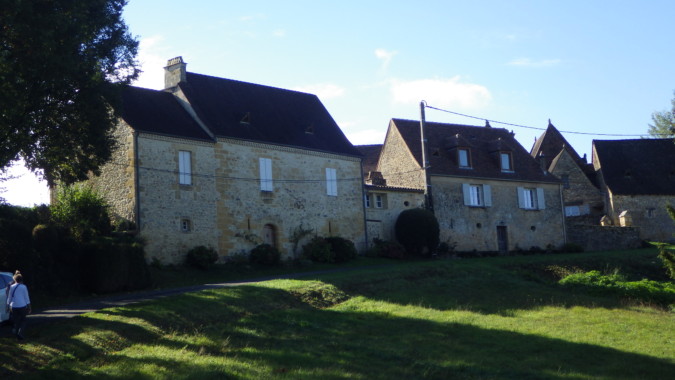
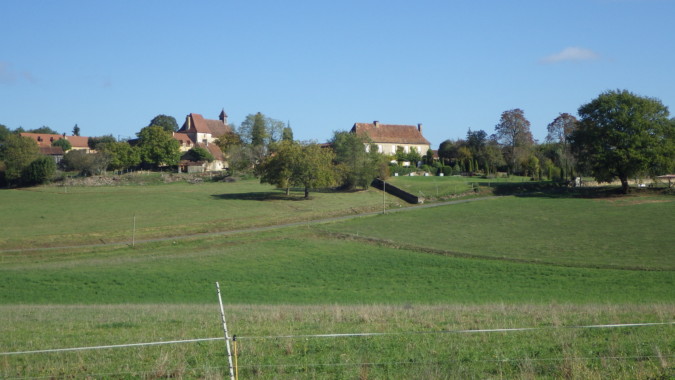





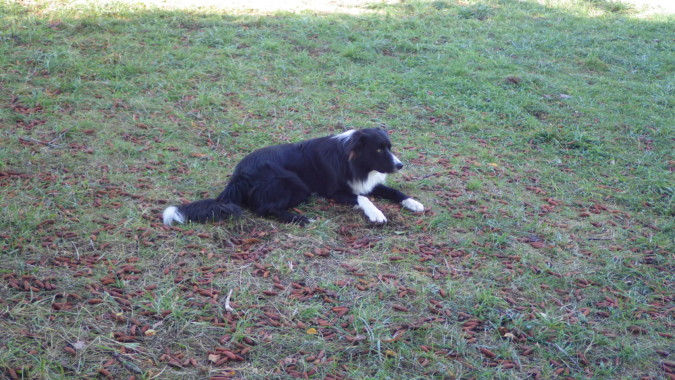
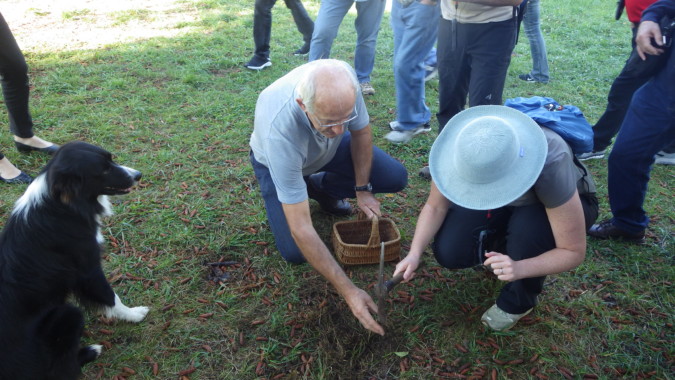







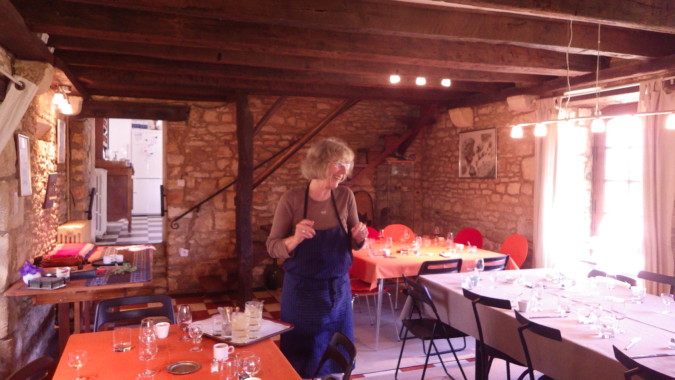
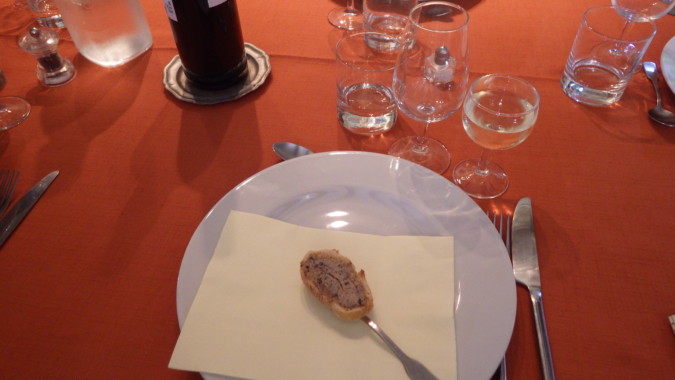
What a culinary adventure – and in such lovely countryside! And the rewarding lunch after…yum. I did not know about the “seeding” of truffles, and that is very interesting to learn – one must help propagate them. I want to go on a truffle expedition here on Gotland; there is a local breed of dog bred just for this task of hunting them out. But I don’t really want to eat the results – I’m not amtruffle fancier. (I’ll send them to you… 😉 )
I will happily take any and all findings!
D. 😘
We are bereft of truffles in central Canada, but we do have lots of maple trees so pancakes (with optional blueberries) and maple syrup must substitute. We don’t need a dog to sniff out our treasure. Love your adventure tour of la belle France. Foodie heaven.
Love, Cousin Bob